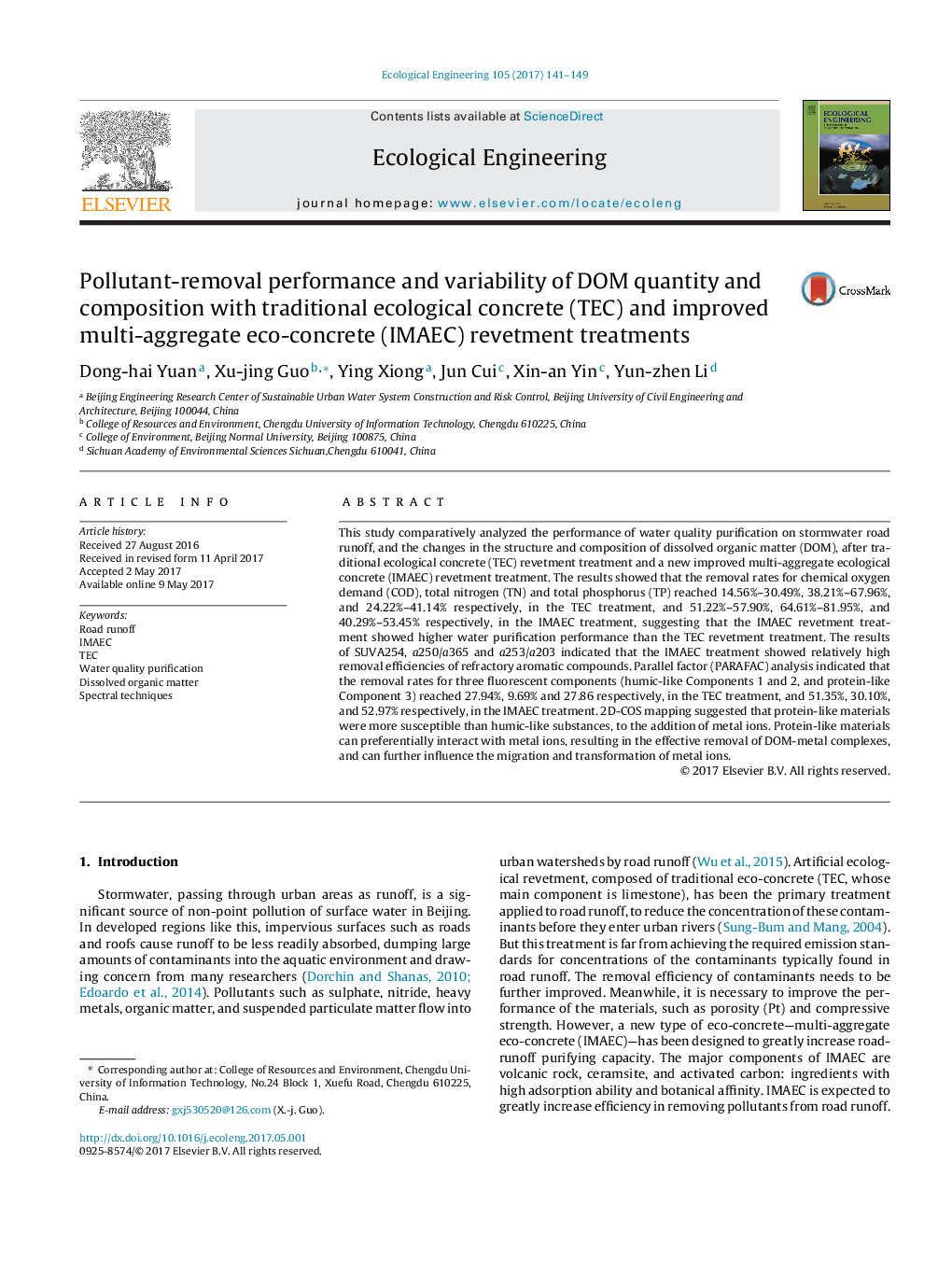| کد مقاله | کد نشریه | سال انتشار | مقاله انگلیسی | نسخه تمام متن |
|---|---|---|---|---|
| 5743607 | 1617996 | 2017 | 9 صفحه PDF | دانلود رایگان |

- IMAEC treatment showed higher water purification performance than the TEC treatment.
- Refractory aromatic compounds can be effectively removed by IMAEC.
- IMAEC treatment showed high removal efficiencies of fluorescent DOM components.
- TEC and IMAEC can influence the binding sites and binding sequencing of DOM-metals.
This study comparatively analyzed the performance of water quality purification on stormwater road runoff, and the changes in the structure and composition of dissolved organic matter (DOM), after traditional ecological concrete (TEC) revetment treatment and a new improved multi-aggregate ecological concrete (IMAEC) revetment treatment. The results showed that the removal rates for chemical oxygen demand (COD), total nitrogen (TN) and total phosphorus (TP) reached 14.56%-30.49%, 38.21%-67.96%, and 24.22%-41.14% respectively, in the TEC treatment, and 51.22%-57.90%, 64.61%-81.95%, and 40.29%-53.45% respectively, in the IMAEC treatment, suggesting that the IMAEC revetment treatment showed higher water purification performance than the TEC revetment treatment. The results of SUVA254, a250/a365 and a253/a203 indicated that the IMAEC treatment showed relatively high removal efficiencies of refractory aromatic compounds. Parallel factor (PARAFAC) analysis indicated that the removal rates for three fluorescent components (humic-like Components 1 and 2, and protein-like Component 3) reached 27.94%, 9.69% and 27.86 respectively, in the TEC treatment, and 51.35%, 30.10%, and 52.97% respectively, in the IMAEC treatment. 2D-COS mapping suggested that protein-like materials were more susceptible than humic-like substances, to the addition of metal ions. Protein-like materials can preferentially interact with metal ions, resulting in the effective removal of DOM-metal complexes, and can further influence the migration and transformation of metal ions.
169
Journal: Ecological Engineering - Volume 105, August 2017, Pages 141-149